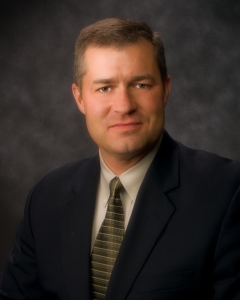MBA: What does M-Vac Systems, Inc. (MSI) specialize in?
MSI specializes in wet-vacuum surface sampling. In forensics terms, DNA material collection, especially touch DNA and collection from porous or rough surfaces like fabrics, rock or cement. We manufacture and supply the M-Vac System and provide the on-site training and certification for using it.
MBA: Tell me a little bit about your scientific background?
I have a BS degree from Brigham Young University in Zoology with a biology, anatomy and chemistry emphasis. Upon graduation I went active duty in the US Army as an NBC officer (nuclear, biological and chemical). I then spent 7 yrs in the pharmaceutical industry, followed by the move to MSI. All those years in science oriented fields has given me a background that has enabled me to pick up fairly quickly on the basics of forensic DNA science. Fortunately, I’m also surrounded by forensic scientists, CSIs and detectives that have taken an interest in the M-Vac System that I regularly contact with questions, which has also been very educational.
MBA: I have been hearing a lot about the M-Vac as a forensic tool, but was it developed specifically for that purpose?
The M-Vac System was originally developed for use in the food safety and bio-defense fields, but using it in forensics was always in the background as a possibility. Collecting individual cells or cellular material requires the same physical forces and steps regardless of whether the target cell is an E Coli, Anthrax or a skin cell. When we had the system initially tested by Sorenson Forensics, we were pretty confident it would work well but didn’t expect up to 200X! As it turns out that is especially important for some touch DNA scenarios and the more we introduce the collection capability to the forensics community, the more we are hearing about the need for better sampling. There are lots of cases out there, both cold and active, that would absolutely benefit from better DNA profiles and the M-Vac may be the only way to get them.
MBA: How does the M-Vac work and how would it be used on a piece of evidence for forensic DNA collection?
The M-Vac sprays a sterile solution onto the surface while simultaneously applying vacuum pressure, creating a “mini-hurricane” on the surface that pulls the cellular material out of the fabric or cracks and crevices where the material is lodged. That is why it is so effective on porous substrates compared to swabs. How the M-Vac is applied to a particular piece of evidence is relative to the evidence, of course, but ideally it would be on a flat surface like an exam table much like you would process evidence with the swab. Regardless though, as long as the sampling head is able to make good contact with the surface, be it in the lab or at the crime scene, it can effectively collect whatever cells are there. Thus far the system has been or is being tested on just about every surface imaginable, including collecting saliva on skin for sexual assault cases. Various fabrics, rocks, cement, hard surfaces like tile, walls, carpet, seat cushions, wood, animal hides and more have all been tried and the M-Vac has done well in the vast majority of the scenarios.
MBA: Forensic DNA laboratories typically process small cuttings and swabs in microcentrifuge tubes for DNA extraction. What steps will need to be taken to perform DNA extraction on the material collected by the M-Vac?
As a wet-vacuum collection system the sample volumes are higher than what the labs are accustomed to but between Sorenson Forensics and Boston University they have found two relatively simple and effective ways to concentrate the sample down. The first is to put the sample into 50mL conical vials and spin it to get a pellet, and the other is to use a .45 micron filter on a vacuum filter flask. Once either the pellet or the filter is obtained then the extraction method is basically the same as processing any other type of sample. We are also testing a disposable filtering system that looks like it will filter the sample perfectly and is really fast.
MBA: How would you compare the sensitivity of the M-Vac to traditional DNA sampling methods?
The M-Vac is aggressive collection utilizing a combination of spray and vacuum, much the same way a carpet cleaner gets down into the fibers or cracks and crevices of the substrate and pulls the particles up. As expected, this will collect more cellular material that is on that surface, dramatically increasing the sensitivity of the sample. The rougher or more porous the surface, the more noticeable the difference you’ll see between the M-Vac and other collection methods. The M-Vac is also not limited on the surface area it can cover. If the DNA is spread over a large area, the M-Vac can cover the entire area if needed.
MBA: A concern with any DNA collection method is contamination. How are contamination concerns addressed regarding use of the M-Vac?
The M-Vac and its components are produced in a clean room and sterilized either via EO or gamma radiation. Any part of the M-Vac that touches the evidence surface or could have DNA material in it (i.e. the tubing) is one time use so there is essentially no chance it could be contaminated either from production or from the previous samples.
MBA: Is the M-Vac being used for casework by any forensic laboratories in the U.S.?
Yes. Sorenson Forensics in Salt Lake City is actively using the M-Vac System and is being fed casework from a number of police departments. Thus far the cases have been the difficult ones that are from very rough or porous surfaces and usually after the swabbing method had failed to generate a profile. There are additional labs that are validating or testing the system and as they come on line we will be updating you.
MBA: Any exciting real-life success stories you want to share?
The M-Vac has had several exciting successes but thus far only one has been published. As you know active or pending cases can’t be discussed so we are limited on what the PDs and labs can tell us and we’re even more limited on what we can share – which is frustrating – but that’s the way it is. The success story that has been published is a homicide/potential sexual assault where the victim, a young female, was submerged for 8-10 hrs before being discovered. After swabbing the victim’s clothing failed to produce a profile the M-Vac System was deployed over the same area and collected enough DNA material to generate a profile. That case summary is on our website if you want a copy (www.m-vac.com). Evidence Technology also ran the story.
MBA: What are the cost of the unit, and cost per sample, as well as any maintenance costs?
The System retail cost is $15,000, with the consumables equaling about $60-75 per sample depending on how the system is deployed. Training is required upon purchase of the first unit and is dependent on location, number of users to certify etc. Maintenance for the system is very limited.
MBA: No doubt you cannot put a price on solving cases and positively impacting lives. Be that as it may, budgets are always an issue. What is the pure financial ROI for departments purchasing an M-Vac for forensic DNA collection?
This question is the crux of the reason the M-Vac System exists. Technology, at every level, is created to save our most precious and expensive resource, and that is time. If a case has a full profile instead of a partial, or a partial instead of no profile, the chances of a case moving forward is that much better. Obviously DNA evidence isn’t the end-all-be-all, but it’s tough to say it doesn’t play a critical role in today’s legal system. So in cases where a better DNA profile is needed and is a possibility, the decision to employ the M-Vac should be fairly easy, especially if the case is a heinous crime or is high profile. When the cost of the entire case is really looked at, including all the man-hours, equipment, time with the prosecuting attorneys etc, there should be justification to incorporate the M-Vac costs into a fair number of cases. The cost of supplies becomes more and more insignificant the more heinous and complex the crime becomes as long as those supplies make a difference elsewhere. As you stated, it’s impossible to really put a price on solving cases, but there is a cost nonetheless and we are very cognizant to those costs. We’re taxpayers too so we want the entire process to be as proficient as possible. The ROI is on the opportunity to have a dramatically better DNA profile to go along with all the other evidence of the case. Usually that is well worth an additional couple hundred bucks.
MBA: Anything else you would like to add regarding the M-Vac?
I think it’s pretty well covered! We are excited to be able to provide the law enforcement and forensic community a new and unique sampling system and an increase in DNA collection capability. We envision the M-Vac boosting serology and DNA evidence collection capabilities at the crime lab, the PD facilities and at the crime scenes, and we’re ready to do what we can to help move cases forward. I’ve been amazed at the creativity and resourcefulness I’ve seen so far in this industry, and working with law enforcement and forensic scientists has been a lot of fun and fascinating. Please connect with us for updates at these websites:
https://www.facebook.com/MVacSystem
http://www.linkedin.com/company/microbial-vac-systems-inc.
Additional information:
http://www.youtube.com/watch?v=XfAMMM0ekxQ
http://www.forensicmag.com/news/m-vac-sucks-dna-evidence-crime-investigations
http://www.ksl.com/?sid=22691690&nid=148&title=dna-vacuum-shows-promise-in-solving-difficult-criminal-cases&s_cid=featured-3



Recent Comments